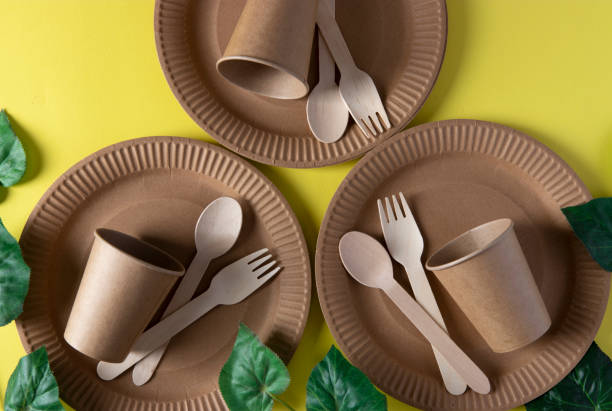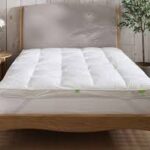In recent years, the growing demand for sustainable alternatives to plastic and foam tableware has sparked interest in eco-friendly materials like bamboo and wheat straw. With increasing regulations against single-use plastics and heightened consumer awareness of environmental issues, businesses and individuals alike are turning to biodegradable plates and utensils.
Among the most popular choices are wheat straw plates and bamboo plates—both praised for their compostability and reduced environmental footprint. But which one is the better option? This comprehensive guide will help you understand the differences between these two materials and help you decide which fits your needs best.
If you’re considering sourcing high-quality sustainable tableware, it’s worth checking out the detailed comparison on Wheat straw vs bamboo plates from AnzhuCraft, a leading manufacturer of eco-friendly products.
What Are Wheat Straw Plates?
Wheat straw plates are made from the leftover stalks of wheat plants after the grains have been harvested. Traditionally considered agricultural waste, wheat straw is now being repurposed into compostable items such as plates, cups, and utensils.
Key Benefits of Wheat Straw Tableware:
�� Biodegradable: Breaks down naturally in a composting environment within 3–6 months.
�� Microwave Safe: Unlike some plastics, it doesn’t release toxins when heated.
�� Water & Oil Resistant: Naturally non-porous, making it ideal for all food types.
�� Lightweight Yet Durable: Tough enough for regular use but lighter than ceramic or bamboo.
Wheat straw tableware is especially popular in schools, catering businesses, and eco-conscious households.
What Are Bamboo Plates?
Bamboo plates are made from pressed and molded bamboo fibers, or thin bamboo sheaths that are laminated together. Bamboo is considered one of the most sustainable raw materials on the planet because it grows quickly, requires no pesticides, and can be harvested without killing the plant.
Key Benefits of Bamboo Tableware:
�� Highly Durable: Bamboo is naturally strong and can last longer than many disposable options.
�� Reusable (in some cases): Depending on the finish, many bamboo plates can be reused multiple times before composting.
�� Antibacterial Properties: Bamboo naturally resists bacterial growth.
�� Elegant Appearance: Ideal for high-end catering, eco-luxury events, or nature-themed settings.
Side-by-Side Comparison: Bamboo vs Wheat Straw
| Feature | Bamboo Plates | Wheat Straw Plates |
| Raw Material Source | Bamboo (fast-growing grass) | Wheat stalks (agricultural waste) |
| Durability | Higher (some reusable) | Moderate (intended for single-use) |
| Compostability | 100% compostable | 100% compostable |
| Microwave Safe | Often not (depends on finish) | Yes |
| Look and Texture | Natural, earthy, wood-like | Smooth, plastic-like, modern |
| Cost | Typically higher | More affordable |
| Weight | Slightly heavier | Lightweight |
| Best Use | Formal events, upscale dining | Cafes, takeout, casual catering |
Environmental Impact
✅ Bamboo
Bamboo regenerates quickly, sometimes growing up to 3 feet per day.
Its root system stays intact after harvesting, preventing soil erosion.
It absorbs more CO₂ and releases more oxygen than many tree species.
✅ Wheat Straw
Utilizes a byproduct that would otherwise be burned or discarded.
Helps reduce agricultural waste and carbon emissions from crop burning.
Requires little to no additional water, fertilizer, or land use.
Both materials are significantly better for the planet than traditional plastic or Styrofoam.
Which Is Better for Your Business or Event?
The best choice depends on your unique use case:
�� For Takeout and Delivery
Wheat straw is lightweight, durable enough for transport, and cost-effective. It’s ideal for:
Cafes and food trucks
Meal prep services
School and hospital cafeterias
�� For Events and Upscale Dining
Bamboo plates have a refined look and feel, making them perfect for:
Weddings and formal parties
Eco-conscious corporate events
Boutique caterers aiming for a premium experience
Common Myths Debunked
❌ Myth: Bamboo and wheat straw are not food-safe.
✅ Fact: Both materials are FDA-approved when processed properly and do not leach harmful chemicals like BPA.
❌ Myth: These plates aren’t strong enough for heavy meals.
✅ Fact: Modern manufacturing makes both options remarkably durable, capable of handling saucy, oily, and heavy dishes without breaking down.
❌ Myth: Compostable means you can throw it in any trash bin.
✅ Fact: While they are compostable, these products should ideally go into industrial or home compost to ensure proper breakdown.
Why Choose a Trusted Manufacturer?
With sustainability becoming a core value for many businesses, it’s important to ensure you’re sourcing from manufacturers who follow ethical and eco-friendly production practices. Here’s what to look for:
�� Certifications: Check for compostability certifications (BPI, OK Compost, etc.).
�� Manufacturing Transparency: Look for companies that show how they source and process materials.
�� Custom Orders & Branding: Can they imprint your logo or provide branded packaging?
�� Global Shipping & Bulk Orders: Are they capable of scaling up for larger events or contracts?
AnzhuCraft is one such company that ticks all these boxes. Specializing in bamboo, wheat straw, and paper-based disposable items, they offer customized solutions for hotels, restaurants, distributors, and more.
Tips for Making the Sustainable Switch
If you’re planning to move away from plastic and foam, keep these tips in mind:
Start with One Product: Replace your plastic plates first, then move to cups and cutlery.
Educate Your Staff or Customers: Use signage or social media to explain the benefits.
Buy in Bulk: Not only do you save money, but bulk orders reduce packaging waste.
Pair with Other Sustainable Solutions: Use compost bins, eco napkins, and biodegradable trash liners.
Final Thoughts
Both wheat straw and bamboo plates offer excellent sustainable alternatives to traditional disposable tableware. If your priority is cost and versatility, wheat straw is the way to go. If you’re aiming for a premium experience and design impact, bamboo is your best bet.
Either way, making the switch is a powerful step toward reducing environmental waste and aligning your business with green values.
For high-quality, eco-conscious tableware options, explore the range offered at anzhucraft.com. Their in-depth resources and reliable manufacturing make them a trusted name in sustainable solutions.






